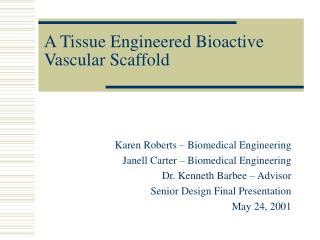

In this work, we develop a design method for TPMS sheet scaffolds, which is able to satisfy multiple requirements including the porosity, Young's modulus, and pore size, based on a parametric optimization approach. However, only one of the requirements of a tissue engineering scaffold was investigated in these studies, and not all of the requirements were satisfied simultaneously. In literature, several design methods for TPMS scaffolds have been developed, which considered some of the important tissue-specific requirements, such as porosity, Young's modulus, and pore size. TPMS scaffolds offer several advantages, which include a high surface area to volume ratio, less stress concentration, and increased permeability compared to the traditional lattice structures, thereby aiding in better cell adhesion, migration, and proliferation. Recently, triply periodic minimal surfaces (TPMSs) have attracted the attention of tissue engineering scientists for fabrication of biomimetic porous scaffolds. 2010 7:S615–S629.Biomimetic scaffold design is gaining attention in the field of tissue engineering lately. Customized CaP/PHBV nanocomposite scaffolds for bone tissue engineering: design, fabrication, surface modification and sustained release of growth factor. Hierarchical starch-based fibrous scaffold for bone tissue engineering applications. Martins A, Chung S, Pedro AJ, Sousa RA, Marques AP, Reis RL, Neves NM. Lode A, Meissner K, Luo Y, Sonntag F, Glorius S, Nies B, Vater C, Despang F, Hanke T, Gelinsky M (2012) Fabrication of porous scaffolds by three-dimensional plotting of a pasty calcium phosphate bone cement under mild conditions. Oliveira AL, Costa SA, Sousa RA, Reis RL (2009) Nucleation and growth of biomimetic apatite layers on 3D plotted biodegradable polymeric scaffolds: effect of static and dynamic coating conditions. In: Ferrari M, Desai T, Bhatia S (eds) BioMEMS and biomedical nanotechnology. Finally, the advantaged and disadvantage of these techniques are compared (Comparison of scaffolding techniques) and summarised (Summary).īioceramics Bone tissue engineering Computer-aided scaffolding techniques Scaffold Solid free-form fabrication.Ĭhen A, Tsang V, Albrecht D, Bhatia S (2007) 3-D fabrication technology for tissue engineering. For each technique, the structure and mechanical integrity of fabricated scaffolds are discussed in detail. After a brief reviews on conventional scaffolding techniques (Conventional scaffolding techniques), a number of CAM techniques are reviewed in great detail. This article starts with a brief introduction of tissue engineering (Bone tissue engineering and scaffolds) and scaffolding materials (Biomaterials used in bone tissue engineering).
#Biomedical engineering tissue engineering scaffold update
This review provides an update on the progress of foaming technology of biomaterials, with a special attention being focused on computer-aided manufacturing (Andrade et al. In the last two decades, numerous scaffolding techniques have been developed to fabricate highly interconnective, porous scaffolds for bone tissue engineering applications.

A huge effort has been invested in bone tissue engineering, in which a highly porous scaffold plays a critical role in guiding bone and vascular tissue growth and regeneration in three dimensions. Hence, the engineered tissue construct is an artificial scaffold populated with living cells and signalling molecules. growth factors) and extracellular matrix (ECM). Natural tissues consist of three components: cells, signalling systems (e.g. Tissue engineering is essentially a technique for imitating nature.


 0 kommentar(er)
0 kommentar(er)
